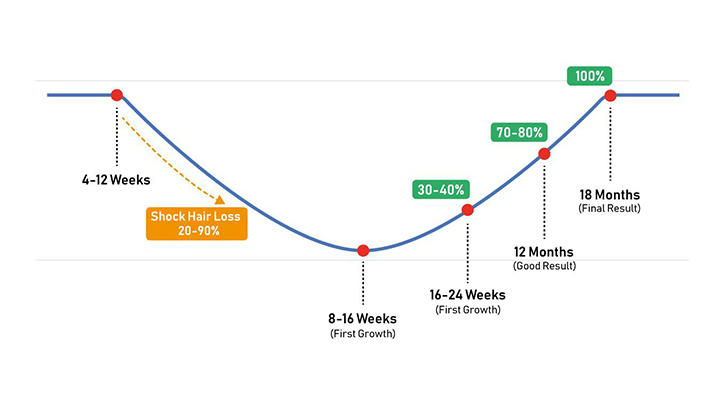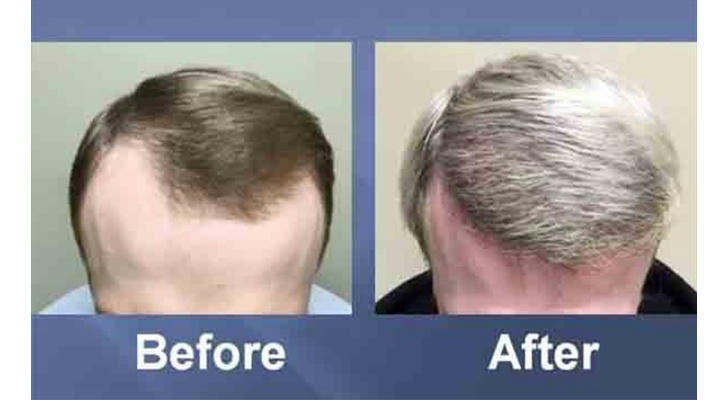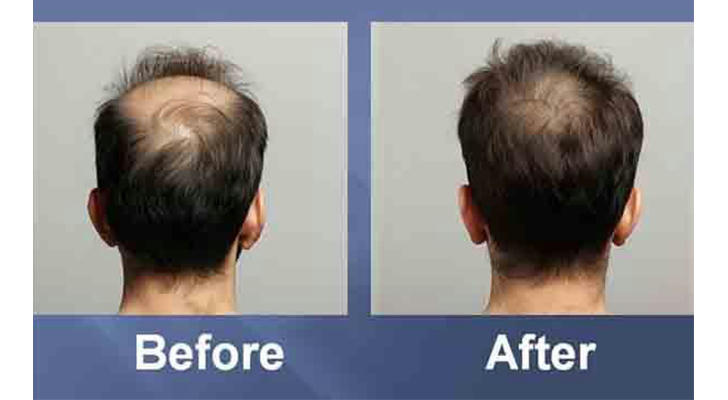How to solve the problem of less hair? Decoding the method of hair transplantation

For everyone, hair is very important in the decoration of appearance. In today's "face-oriented" era, hair loss can really ruin a face! No matter how good-looking you are, "baldness" and "high hairline" will still make you look old, affect your image, and lower your appearance. So how to increase the amount of hair if you have less hair? Many people have adopted a medical beauty project that has received much attention in recent years - hair transplantation. This technology has brought hope to many patients with hair loss. So, What do you need to know about hair transplantation?
As a novice in the field of hair transplantation, what basic knowledge do you need to know?
1. Understand the principles of hair transplantation
Hair transplantation involves transplanting hair follicles from a donor site (usually located at the back of the head) to areas with thinning or balding hair. This is done to improve hair loss and increase hair volume. Since the hair follicles at the back of the head are not affected by androgens, the transplanted hair can continue to grow for a long time.
2. What are the indications and contraindications for hair transplantation?
Indications:
• Androgenetic Alopecia: Common hereditary hair loss in both men and women.
• Traction Alopecia: Hair loss due to excessive pulling or tension on the hair.
• Post-Surgical or Post-Traumatic Hair Loss: Hair loss resulting from injuries or surgical procedures.
• Alopecia Areata: Certain cases where other treatments have failed.
Contraindications
• Insufficient Donor Hair Supply: Lack of adequate hair follicles in donor areas.
• Active Scalp Infections or Diseases: Conditions that could compromise healing or hair growth.
• Unrealistic Expectations: Patients expecting unrealistic results that cannot be achieved.
• Chronic Medical Conditions: Certain health issues like uncontrolled diabetes that may affect healing.
3. What are the hair transplant techniques? What are the advantages and disadvantages?
Follicular Unit Extraction (FUE)
• Advantages: Minimally invasive, no linear scar, faster recovery.
• Disadvantages: Multiple sessions may be needed, higher cost, lower graft viability.
Follicular Unit Transplantation (FUT)
• Advantages: High graft yield, potentially lower cost, better graft survival.
• Disadvantages: Linear scar, longer recovery, more invasive.
Direct Hair Implantation (DHI)
• Advantages: No prior incision, precise placement, minimal scalp trauma.
• Disadvantages: More expensive, time-consuming, requires skilled surgeon.
Robotic Hair Transplantation
• Advantages: Enhanced precision, minimal invasiveness.
• Disadvantages: High cost, technology-dependent, limited to FUE.
4. How to choose a regular medical institution and doctor for hair transplantation
Choosing a Medical Institution
• Reputation:Check reviews and ratings.
• Accreditation: Ensure proper certifications and licenses.
• Facilities: Look for modern, well-equipped clinics.
Choosing a Doctor
• Experience: Verify specialized training and experience.
• Results: Review before-and-after photos of past patients.
• Consultation: Assess professionalism and communication during initial consultation.
What is the operation process of hair transplant surgery?

1. Preoperative Preparation
Anesthesia and Donor Area Preparation:
Before the procedure begins, the doctor will numb the back of the patient's head with a local anesthetic to ensure that the patient does not feel pain. The donor area where the follicles will be extracted is cleaned and prepared.
2. Extracting Follicles
The hair follicles are extracted from the donor area. This can be done by removing individual follicles using a small punch tool (FUE) or taking a piece of skin and then dissecting it into follicles (FUT). The follicles are then stored in a special solution to keep them alive.
3. Implantation into the Recipient Site
Tiny incisions or slits are made in the thinning or balding areas of the scalp. The extracted follicles are carefully placed into these incisions. The doctor will arrange them into a shape that mimics the natural hair growth pattern.
How to care for the transplanted hair
1. Short-term care after surgery
• Keep the Scalp Clean: Avoid touching or scratching the transplanted area. Gently wash your scalp with a mild, non-medicated shampoo as instructed by your doctor.
• Avoid Direct Sunlight: Protect your scalp from direct sun exposure to prevent irritation or damage.
• Follow Medication Guidelines: Take any prescribed medications, such as pain relievers or antibiotics, as directed.
2. Managing Discomfort and Potential Side Effects
• Discomfort: Mild pain and swelling are common. Over-the-counter painkillers can help, but consult your doctor before taking any medication.
• Swelling and Bruising: Applying a cool compress (avoiding direct contact with the scalp) can help reduce swelling.
• Scabs and Itching: Scabs and mild itching are normal. Avoid picking at scabs to prevent infection or dislodging the grafts.
3. Shampooing and Cleansing
After a certain period of time (usually 3-5 days after surgery), patients can wash their hair under the guidance of a doctor. When washing your hair, pay attention to the moderate water temperature and avoid rubbing the implant area vigorously. After that, clean your scalp regularly to keep your scalp healthy.
4. Recovery timeline and effect presentation
• Initial Healing: The scalp typically heals within 7 to 14 days. Most visible swelling and redness will subside during this period.
• Hair Growth: New hair growth usually starts within 3 to 4 months. Initially, the transplanted hair may fall out before new growth appears.
• Full Results: Significant improvement in hair volume is usually visible around 9 to 12 months after the procedure, with final results often seen by 12 to 18 months.

5. Long-term care and nursing skills
Long-term care for hair transplants includes maintaining scalp hygiene with gentle shampoos, avoiding harsh treatments or heat, and using prescribed medications if needed. Regular follow-up appointments with your doctor ensure optimal results and early detection of any issues. Protect your scalp from excessive sun exposure and trauma.
People who have received hair transplants: before and after
1. Joseph Martine :
• Before: Clooney showed signs of thinning hair and a receding hairline, particularly noticeable in his early 40s.
• After: Following his hair transplant, Clooneys hair looks thicker and more consistent, contributing to his refined and confident look.

2. Daniel Rodriguez:
• Before: Musk had visible hair loss and thinning, especially noticeable in his earlier public appearances.
• After: After undergoing hair transplant surgery, Musk's hair has appeared fuller and more even, complementing his overall image.

3. John Travolta
• Before: Receding hairline and noticeable bald spots in the early 2000s.
• After: Fuller and more natural-looking hair, with improved hairline.

These peoples hair transplant success stories demonstrate the dramatic results of the procedure in restoring natural hair volume and enhancing appearance.
